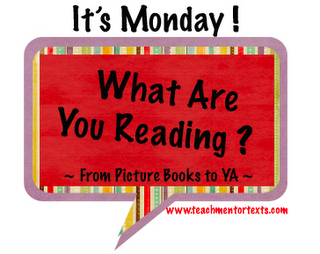BLOG TOUR!
by Claire Landrigan and Tammy Mulligan
Stenhouse, 2013
Here are Claire and Tammy's answers to Franki's interview about the book:
What made you decide to write a book on assessment? Good question! Not the liveliest of topics we know. We found ourselves spending most of our time talking with teachers about assessment regardless of the focus of our professional collaboration. For such a dry topic, it seems to evoke so much emotion in all of us. Teachers care so deeply about their students and many see assessment as the means to decide if they are teaching well. We wanted to bring teacher voice and professional discretion back into the assessment conversation. Assessment should not be just about numbers, and not just about standardized tests. Many of us are feeling that assessment is no longer about the work we are doing in the classroom. Writing a book about the broader perspective of assessment, and how to make it meaningful for students and teachers every day, is exciting for us.
What is the biggest challenge teachers face when it comes to assessment today? The biggest challenge is using the assessment data we have available effectively. So much time is put into the administration of assessments, but often no time is taken to look at the results and think about what the assessment results mean for our learners. For example, when a school adopts a new assessment the professional learning typically only focuses on how to administer the assessment, not on how to analyze and interpret it. When this happens we can get caught in a cycle of continually collecting assessment data without fully understanding how the assessment was designed and what aspects of reading or learning the assessment measures.
Assessments are complicated and we need to understand what each assessment measures and how to interpret the results. We then need to analyze the results with our learners in mind so we can use them to set learning goals. Our rule is: if we have it, we use it. Any piece of data, especially when triangulated with other sources of data, can provide useful information on our readers. The challenge is to add “use” to the typical cycle – we need to break the cycle of just administering, collecting, and reporting assessments, and use them!
What advice do you have for teachers to stay grounded when stakes of testing are so high? Respect the test, but keep it in perspective. We try to remember that a high stakes test is only one data point and if we are going to truly understand our readers, then we need to look at multiple pieces of data. With that being said, we do take that data point seriously and use it to help us understand our readers. We stay grounded by not dismissing it, not over-valuing it, and most importantly by using it.
We always use multiple sources of data when thinking about a reader. So we encourage teachers to always consider and use multiple sources of data when interpreting high stakes test results. If we want to move beyond the number to figure out why a student performed in a particular way we need to analyze that number across multiple sources and intervals of data. For example if a student does poorly on the multiple choice questions of the reading portion of a high stakes test, then we can look at recent running records to determine if it was the text level of the passages on the test that caused the student to miss so many items. If the student had difficulty answering questions on the information text selections, we might look at his reading log to determine how often this student is reading informational texts. We think it helps us feel more in control of the high stakes tests when we use the results to help us teach better.
What kinds of assessments have you found most positively impact student learning? We don’t think there is one single assessment that has the most positive impact on student learning; we think that the best way to impact student learning is by talking with our students about what we are noticing in all of their assessment data and using it to set instructional goals. That said, informal, formative data is most readily available to us so we can talk with our students more often about that data. We have, therefore, found informal, formative assessments to have the most positive impact on our students. When we do talk with students about the formal, summative data we have we find that our students respond and give us greats insights into the results. It is not that these assessments are not helpful, but we do not have this type of data daily, weekly or even monthly so the frequency of using these assessments cause them to have less of an impact.
Can you expand on your thinking in triangulating data? Why is that important? Triangulating data is teaching! When we look at multiple pieces of data with a purpose and with questions in our mind we are believe we are laying the foundation to truly teach. Teaching is more than following a script, aligning to standards or pacing. Teaching is understanding the learner in front of us and adjusting our instruction to help each learner meet high standards. When we triangulate we are putting the pieces of a puzzle together so we can see the whole picture and understand why a student is confused or making an error. When we understand the why behind the number we can teach our students effectively – triangulating gives us the why behind the number.
For example, last week we met Tommy, a 4th grader. He is reading approximately 1 year below grade level according to his benchmark assessment. We analyzed a few running records that were administered in the past month and a pattern emerged that showed that Tommy reads inaccurately by substituting incorrect words when reading. When we analyzed these substitutions we noticed that Tommy typically ignores the middle of the word and guesses based on only the first and last letter sounds. We then assessed Tommy using a tool that measured his knowledge of phonics skills in isolation. He had a perfect score. Now we were curious! He knows the sounds and the rules but is not applying them in context. He doesn’t need additional instruction on specific sounds, he needs to learn to notice when he reads inaccurately, apply his knowledge of phonics when reading independently, and to make sure what he says makes sense in the context of the text.
If we only looked at one number, we could have jumped to the conclusion that Tommy needs additional phonics instruction. Triangulating is so important because it really helps us understand our readers and design instruction that meets his or her specific needs. Not to mention – it is fun when you really get into it and begin to notice these patterns and dig deeper to understand.
You talk a lot in your book about the student's role in assessment. Why do you think that is so important? That was our biggest “Aha!” when we wrote this book. The process of writing really helped us clarify and make explicit what we were implicitly doing with our students. In each section of the book our biggest conversations were around the students. Students are our best source of assessment data- they give us insight into the “whys” behind their actions and help us to understand their thinking process.
For us, it really comes down to the fact that we can’t determine a student’s learning goals without talking with the student to understand his/her own thinking. We also can’t expect a student to learn and grow unless we talk with them about our analysis of the assessment data. Our readers need to know what they are doing well and what they need to learn. To us this is all assessment. If instruction and assessment are inseparable then the student must be a part of the process.
Imagine going to a doctor and not speaking to him/her about your symptoms. Then the doctor completes a physical exam and never tells you the results or what you could do to be healthier. In medicine, both the patient and the doctor are essential. In teaching, both the teacher and the student are essential in identifying what needs to be taught, choosing some goals to meet those needs, and monitoring the progress towards those goals so instructional adjustments can be made.
How do you think Common Core will impact assessment practices? Of course no one knows exactly how the Common Core will impact assessment practices but we know it will most likely include a formal, quantitative and standards-based assessment due to the number of students being assessed by the same tool. We are hopeful that the process will give us time to learn what the PARCC or Smarter Balanced assessment measures and how to analyze, interpret and use the data. We are also hopeful that the results of this assessment will not be overemphasized but seen as one data point to triangulate with our formative ongoing assessments. In our state, the Common Core has inspired conversations around authentic on-demand assessments and curriculum embedded performance assessments that are being designed by teachers in grade level and district teams. We see a great opportunity for teachers to design meaningful common formative assessments to help them plan and adjust their instruction to meet the needs of their students.
Check out the other stops on the blog tour:
Our Camp Read-A-Lot -- May 21
Reflect and Refine -- May 22
Stenhouse blog to wrap up -- May 24











